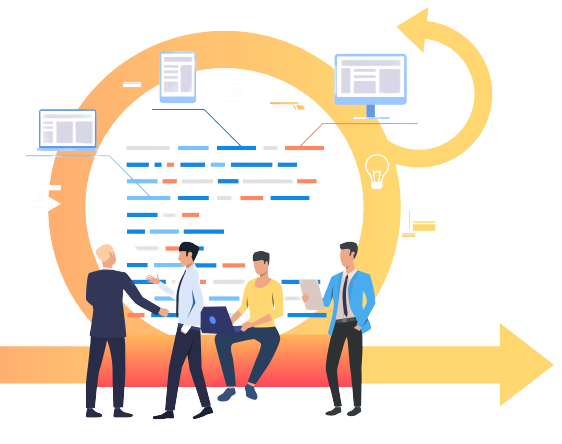Agile methodology is one of the most popular and effective practices for delivering a Project.It helps the team to deliver the project faster and efficiently.To choose the correct and appropriate Agile Framework in project management is a smart choice and effective process.
A Project depends on a lot of factors e.g. The kind of Project and its complexities, Team size, requirements and stakeholders expectations.
Some of the steps that can help for making a choice for Agile Framework:
1. Requirement Analysis and understanding
- Firstly seize the Project Scope,Goals and objectives.
- Speak to stakeholders and know their expectations.
- Study and analyse the size of the Project,its complexity and Time lines of deliverables.
2. Know your Team and their skill sets
- Do a detailed analysis on the Team's knowledge about Agile Practices and Framework.
- Leverage the Team's expertise in agile accordingly in particular Agile Methodologies.
3. Know your Project Constraints and Limitations
- Figure out the Constraints or limitations eg. Budget,Time or Resources.
- Study the Framework to see how it can adapt to meet the Project constraints.
4. Learn about the Popular Agile Framework, in short research the popular one
- Find out about the most popular agile frameworks like scrums, XP, Lean etc.
- Learn and understand objectives, principles and roles associated with each framework.
5. Evaluate Framework Suitability
- Compare the features and benefits of each Agile framework with the project's requirements.
- Consider the flexibility of each framework to accommodate changes during the project.
6. Consider Project Team Size
- Evaluate the recommended team size for each Agile framework.
- Select a framework that aligns well with the size of the project team.
7. Assess Project Complexity and Scope
- For complex and large-scale projects, consider frameworks like Scrum or SAFe (Scaled Agile Framework).
- For small, fast-paced projects with changing priorities, consider Kanban or Lean.
8. Consider Project Duration
- Take into account the project's timeline and its compatibility with different Agile frameworks.
- Some frameworks, like Scrum, work well for projects with fixed-length iterations, while others, like Kanban, are more continuous.
9.Evaluate Importance of Feedback and Iteration
- Determine how critical regular feedback and iteration are for project success.
- Agile frameworks like Scrum and XP emphasize frequent feedback and iteration.
10. Assess Cultural Fit
- Evaluate the organisation's culture and readiness to embrace Agile practices.
- Choose an Agile framework that aligns with the organisation's values and principles.
Conclusion
Embrace Agile's culture of continuous improvement and experimentation. If unsure, start with a lightweight Agile framework and adapt as you gain more insights about the project's needs.

